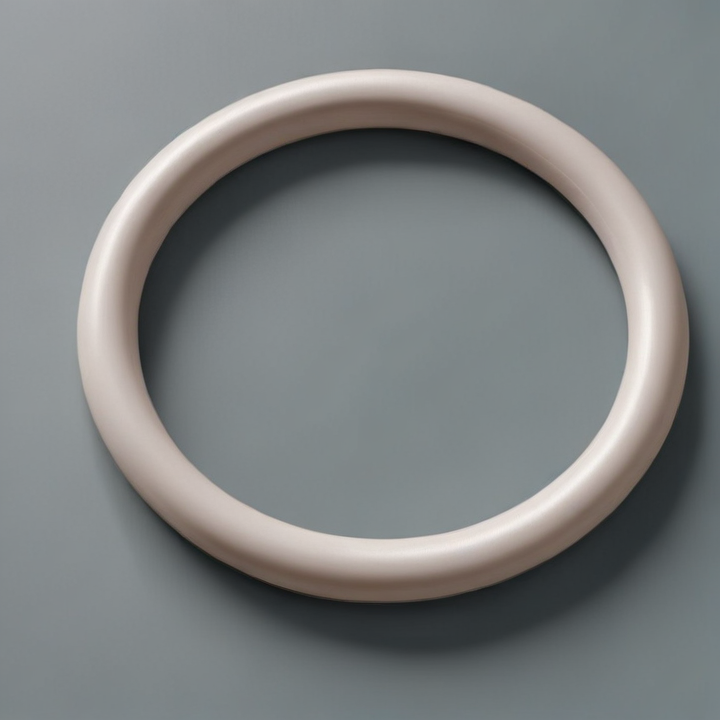ptfe o-ring Safety Certifications
PTFE (Polytetrafluoroethylene) O-rings are renowned for their exceptional chemical resistance, low friction, and high-temperature performance. However, their application in various industries necessitates adherence to stringent safety certifications and standards. Below are key safety certifications relevant to PTFE O-rings:
1. FDA (Food and Drug Administration): PTFE O-rings utilized in food processing, pharmaceuticals, and medical devices often need to meet FDA 21 CFR 177.1550 regulations, ensuring they are safe for direct food contact and do not leach harmful substances.
2. USP Class VI: Medical and pharmaceutical industries frequently require PTFE O-rings to comply with the United States Pharmacopeia (USP) Class VI standards. These standards include rigorous biological reactivity tests to ensure the material is biocompatible and safe for medical applications.
3. NSF (National Sanitation Foundation): For potable water applications, PTFE O-rings must meet NSF/ANSI Standard 61, which sets health effects criteria for components that contact drinking water, ensuring they do not introduce contaminants.
4. 3-A Sanitary Standards: In the dairy and food processing industries, compliance with 3-A Sanitary Standards ensures PTFE O-rings meet hygiene requirements, making them suitable for equipment in contact with milk and dairy products.
5. RoHS (Restriction of Hazardous Substances): PTFE O-rings must often comply with RoHS directives, especially for electronic and electrical applications, to ensure they do not contain hazardous substances like lead, mercury, or cadmium above specified thresholds.
6. REACH (Registration, Evaluation, Authorisation, and Restriction of Chemicals): PTFE O-rings used in the EU must comply with REACH regulations to ensure they do not pose health or environmental risks throughout their lifecycle.
Compliance with these certifications ensures that PTFE O-rings are safe, reliable, and suitable for their intended applications across diverse industries. Always verify that the O-rings meet the required standards for your specific use case.
List Reference Technical Parameters of “ptfe o-ring”
PTFE (Polytetrafluoroethylene) O-rings are widely utilized for their excellent mechanical and chemical properties. Below are the key technical parameters of PTFE O-rings:
Material Properties:
1. Chemical Resistance:
– Exceptional resistance to almost all chemicals including acids, bases, solvents, and gases.
– Suitable for use in chemically aggressive environments.
2. Temperature Range:
– Operational between -200°C to +260°C (-328°F to +500°F).
– Withstands both cryogenic and high-temperature applications.
3. Mechanical Properties:
– High tensile strength and rigidity.
– Low coefficient of friction, which provides good wear resistance.
– Less elastic compared to other elastomers, with minimal deformation under stress.
4. Electrical Insulation:
– Exhibits excellent dielectric properties, making them suitable for electrical insulation applications.
Dimensional Specifications:
– Hardness:
Shore D hardness typically around 50-60.
– Tolerance:
Depending on the specific application, industry standards such as AS568, ISO 3601, and DIN 3771 can be used to define tolerances.
Application Suitability:
– Pressure Resistance:
Suitable for high-pressure environments, typically up to several thousand PSI depending on the specific design and application.
– Compatibility:
Universally compatible with most hydraulic fluids, lubricants, and highly reactive substances.
Limitations:
– Lower Elasticity:
Compared to rubber O-rings, PTFE O-rings have lower flexibility, affecting their sealing performance under dynamic conditions.
– Installation:
Due to stiffness, care must be taken during installation to avoid damaging the O-ring.
Industrial Applications:
1. Chemical Processing:
– Pipelines and valves that need to withstand corrosive chemicals.
2. Aerospace and Automotive:
– High-performance engines and hydraulic systems.
3. Pharmaceuticals and Food Processing:
– Compliance with stringent purity standards, such as FDA regulations.
Conclusion:
PTFE O-rings provide exceptional performance in extreme environments due to their excellent chemical resistance, wide temperature range, and mechanical properties. However, careful consideration must be given to their lower elasticity and proper installation techniques to ensure optimal performance.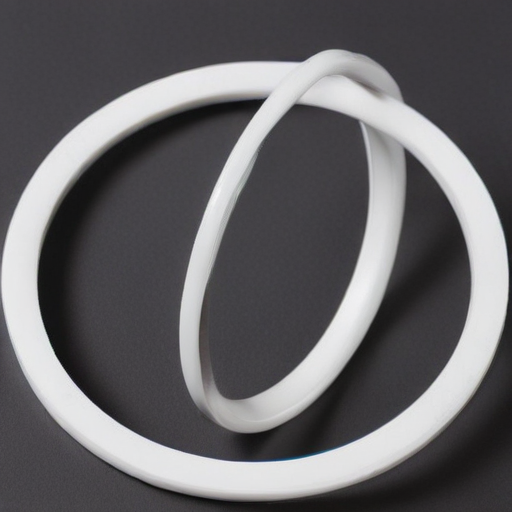
List Product features of “ptfe o-ring”
Certainly! PTFE (Polytetrafluoroethylene) O-rings are valued for their unique properties and broad range of applications. Here are some key features:
1. Chemical Resistance:
– PTFE O-rings are highly resistant to a wide range of chemicals, solvents, and corrosive materials, making them ideal for use in harsh environments.
2. Temperature Tolerance:
– These O-rings can withstand extreme temperatures, both high and low, typically ranging from -200°C to +260°C (-328°F to +500°F).
3. Low Friction:
– PTFE has one of the lowest coefficients of friction, reducing wear and tear and enhancing the lifespan of the O-ring.
4. Non-Reactivity:
– Its non-reactive nature prevents interactions with fluids and gases, ensuring the integrity of the sealing media.
5. Non-stick Surface:
– The non-stick quality of PTFE prevents adhesion and contamination, making it suitable for applications requiring clean seals.
6. Electrical Insulation:
– PTFE is an excellent electrical insulator, so it can be used in electrical and electronic applications.
7. FDA Approved:
– Many PTFE O-rings meet FDA requirements for food and pharmaceutical applications, ensuring safety in these industries.
8. UV and Weather Resistance:
– They are highly resistant to UV radiation and weathering, suitable for outdoor and long-term applications.
9. Mechanical Stability:
– PTFE O-rings maintain their shape and resilience even under high pressure and stress conditions.
10. Versatile Application Range:
– Used in industries such as aerospace, chemical processing, food and beverage, pharmaceuticals, and electrical engineering.
These features make PTFE O-rings an excellent choice for applications requiring durability, reliability, and high performance under various demanding conditions.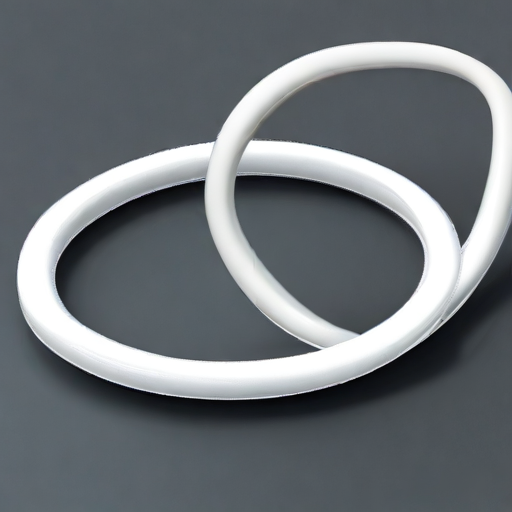
List Various Types of “ptfe o-ring”
Polytetrafluoroethylene (PTFE) O-rings are highly versatile and used in various applications due to their excellent chemical resistance, low friction, and wide temperature range. Here are different types of PTFE O-rings:
1. Virgin PTFE O-rings: Made from 100% pure PTFE, these are highly resistant to chemicals and operate effectively in extreme temperatures. They are ideal for applications that demand high purity, such as in food, pharmaceutical, and medical industries.
2. Filled PTFE O-rings: These O-rings contain fillers like glass, carbon, or bronze to enhance certain properties like mechanical strength, thermal conductivity, or wear resistance.
– *Glass-Filled PTFE*: Offers improved mechanical properties and reduced deformation.
– *Carbon-Filled PTFE*: Enhanced wear resistance and thermal conductivity.
– *Bronze-Filled PTFE*: Improved dimensional stability and reduced creep.
3. Encapsulated PTFE O-rings: These involve an elastomer core (such as silicone or Viton) encased in a seamless PTFE jacket. They provide the flexibility and resilience of an elastomer with the chemical resistance of PTFE. They are suitable for dynamic applications and environments dealing with aggressive chemicals.
4. Expanded PTFE O-rings (ePTFE): These O-rings are made from expanded PTFE, which provides greater compressibility and flexibility. They are often used in applications requiring a superior seal under lower bolt loads, such as in flanges or as gasket seals.
Each type offers unique advantages depending on the application requirements. Understanding the specific needs of your operating environment will help in selecting the most suitable PTFE O-ring.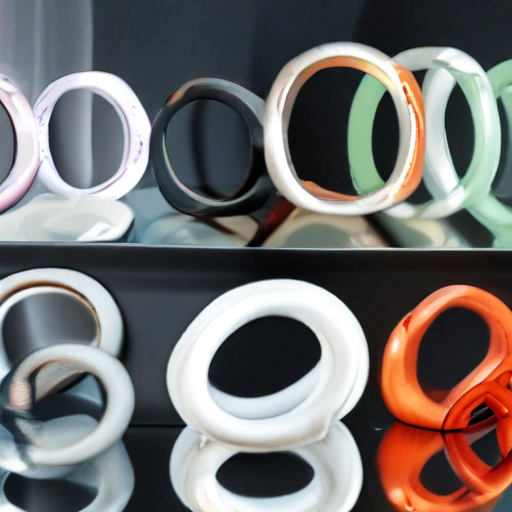
List Application of “ptfe o-ring”
PTFE (Polytetrafluoroethylene) O-rings are widely used across various industries due to their remarkable chemical resistance, low friction, and wide temperature tolerance. Here are some key applications:
1. Chemical Industry:
– Chemical Processing Equipment: PTFE O-rings are used in pumps, valves, and reactors exposed to corrosive chemicals.
– Seals for Aggressive Media: They are ideal for sealing systems involving highly reactive or corrosive chemicals.
2. Oil and Gas:
– Drilling Equipment: PTFE O-rings withstand harsh drilling conditions, such as exposure to crude oil and natural gas.
– Pipelines and Valves: They ensure leak-proof sealing under high pressure and temperature variations.
3. Food and Beverage Industry:
– Processing Equipment: PTFE O-rings provide reliable seals in food processing machinery, ensuring compliance with food safety standards.
– Bottling and Packaging Machines: Their chemical resistance ensures they do not contaminate food products.
4. Pharmaceuticals:
– Sterile Equipment: PTFE O-rings are used in autoclaves, mixers, and packing lines, providing durable, non-reactive seals.
– Bioreactors and Fermenters: They ensure sterility and integrity in bio-pharmaceutical processes.
5. Aerospace:
– Fuel Systems and Engines: PTFE O-rings are used due to their resistance to fuels, lubricants, and hydraulic fluids.
– Cabin Pressure Systems: Ensuring reliable performance under extreme temperature conditions.
6. Semi-Conductor Manufacturing:
– Cleanroom Equipment: Their low outgassing properties make them suitable for use in cleanrooms and sensitive semiconductor manufacturing processes.
7. Medical Devices:
– Syringes and Pumps: PTFE O-rings are used for their biocompatibility and chemical inertness.
– Diagnostic Equipment: Ensuring reliable sealing in various analytical instruments.
8. Automotive Industry:
– Fuel Systems: PTFE O-rings ensure durability and reliability in fuel injection systems.
– Braking Systems: Used due to their resistance to brake fluids and high temperatures.
9. Hydraulic and Pneumatic Systems:
– Cylinders and Actuators: PTFE O-rings provide excellent sealing performance in hydraulic and pneumatic equipment.
These applications leverage the unique properties of PTFE O-rings, providing durable, reliable, and chemically resistant sealing solutions across diverse industries.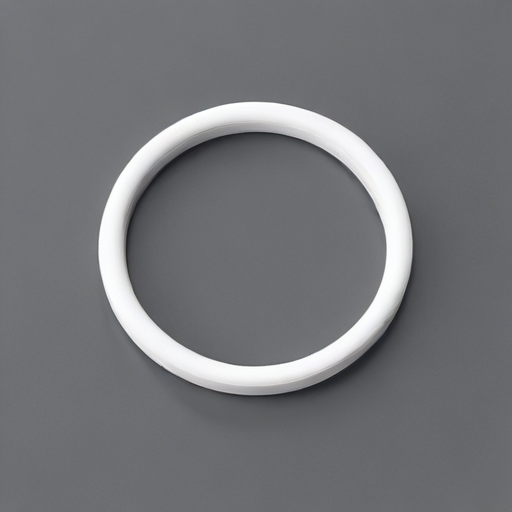
List Buyer Types of “ptfe o-ring”
Certainly! Buyers of PTFE (Polytetrafluoroethylene) O-rings can be broadly classified into several categories based on their industries and specific needs. Here are the primary buyer types for PTFE O-rings:
1. Aerospace Industry:
– Utilizes PTFE O-rings for their high temperature resistance and low friction properties.
– Commonly used in hydraulic systems, fuel systems, and other critical components.
2. Automotive Sector:
– Requires PTFE O-rings for their chemical resistance and durability under varying temperatures.
– Used in fuel injectors, braking systems, and engine components.
3. Chemical Processing:
– Demands PTFE O-rings for their exceptional resistance to corrosive chemicals and solvents.
– Essential in sealing applications involving pumps, valves, and reactors.
4. Pharmaceutical and Medical Industries:
– Values PTFE O-rings for their non-reactive nature and compliance with stringent hygiene standards.
– Common in medical devices, laboratory equipment, and fluid handling systems.
5. Food and Beverage:
– Chooses PTFE O-rings for their FDA compliance and ability to maintain integrity in sanitary environments.
– Utilized in processing equipment, dispensing systems, and sealing applications.
6. Hydraulic and Pneumatic Systems:
– Relies on PTFE O-rings for their wear resistance and ability to perform under high pressures.
– Found in cylinders, valves, and control mechanisms.
7. Oil and Gas Industry:
– Opts for PTFE O-rings due to their durability and resistance to extreme temperatures and aggressive environments.
– Essential in drilling equipment, pipelines, and refining processes.
8. Industrial Machinery:
– Prefers PTFE O-rings for their longevity and resistance to harsh operating conditions.
– Used in compressors, mixers, and heavy machinery.
These buyers prioritize PTFE O-rings for their unique properties, including chemical inertness, temperature stability, and low friction, making them suitable for a wide range of demanding applications.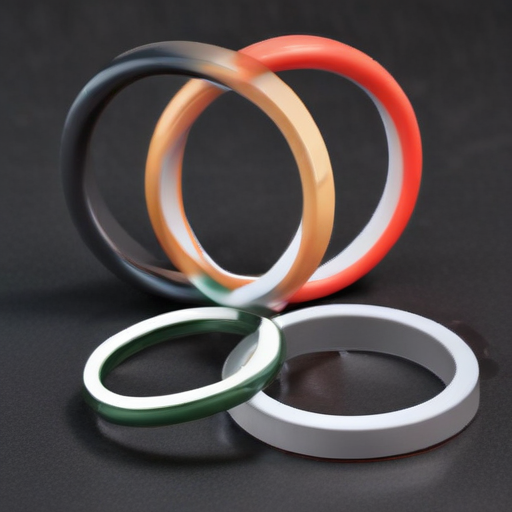
List “ptfe o-ring” Project Types for Different Industries
Sure! Here’s a brief overview of PTFE (Polytetrafluoroethylene) O-ring project types across different industries, within 300 words:
Automotive
1. Engine Components: PTFE O-rings are essential for sealing components exposed to high temperatures and aggressive chemicals.
2. Fuel Systems: Utilized in fuel injectors and pumps to prevent leakage of volatile fuels.
3. Transmissions: Ensures proper sealing in automatic transmission systems.
Aerospace
1. Fuel Systems: Critical for maintaining seals in high-pressure, high-temperature environments.
2. Hydraulic Systems: Utilized in landing gear and control surfaces to ensure reliability.
3. Cabin Pressure Systems: Seals critical components to maintain cabin pressure.
Chemical Processing
1. Pumps and Valves: PTFE O-rings provide durable seals in aggressive chemical environments.
2. Reactors and Mixers: Compatible with a broad range of chemicals, ensuring no leakage.
3. Pipe Systems: Used to seal joints and flanges in chemical processing pipelines.
Food and Beverage
1. Processing Equipment: Ensures contaminants do not enter processing lines.
2. Packaging Machines: Utilized in sealing mechanisms to maintain hygiene.
3. Bottling Plants: Ensures seals are maintained in high-speed bottling lines.
Medical
1. Syringes and Pumps: Prevent contamination in drug delivery systems.
2. Diagnostic Equipment: Ensures reliable sealing in sensitive diagnostic instruments.
3. Sterile Environments: Used in equipment that must be sanitized frequently.
Oil and Gas
1. Drilling Equipment: Provides seals that withstand harsh underground conditions.
2. Pipeline Systems: Prevents leaks in high-pressure gas and liquid lines.
3. Refineries: Used in high-temperature, high-pressure sealing applications.
Pharmaceuticals
1. Bioreactors: Prevent contamination in sensitive pharmaceutical manufacturing.
2. Fluid Transfer Systems: Ensures contamination-free transfer of pharmaceutical liquids.
3. Packaging Equipment: Used in capsule filling and sealing machines.
Industrial Machinery
1. Hydraulic Systems: Ensures leak-free operation in hydraulic presses and lifts.
2. Pneumatic Systems: Provides seals that withstand high pressure and varied environmental conditions.
3. Compressors: Maintains seals in high-speed, high-temperature environments.
PTFE O-rings are versatile, offering durability and chemical resistance, making them invaluable across diverse industries.
ptfe o-ring Accessories Upgrades and Custom Manufacturing Options
PTFE O-rings are highly valued for their outstanding chemical resistance, low friction, and high-temperature tolerance, making them ideal for various demanding applications. Accessories upgrades and custom manufacturing options can further enhance the functionality and versatility of PTFE O-rings.
Accessories Upgrades:
1. Backup Rings: Often used in high-pressure environments, backup rings help to prevent extrusion and improve the longevity of PTFE O-rings.
2. Lubricants: Special PTFE-compatible lubricants can be applied to reduce friction and wear, enhancing performance in dynamic applications.
3. Seal Protectors: These can be used to protect the O-rings from harsh environmental factors and mechanical damage during installation.
Custom Manufacturing Options:
1. Material Blends: PTFE can be blended with other materials like glass, bronze, or carbon to increase mechanical strength, wear resistance, or electrical conductivity.
2. Size and Cross-Section Variations: Custom sizes and cross-sectional profiles can be manufactured to meet specific application requirements, such as non-standard groove dimensions.
3. Color Coding: Custom color coding can be utilized for easy identification and assembly, particularly important in complex assemblies with multiple O-ring sizes.
4. Surface Finishes: Enhanced surface finishes such as micro-texturing can improve sealing performance and reduce stick-slip behavior.
5. Custom Packaging: Tailor-made packaging solutions help to maintain the cleanliness and integrity of O-rings, especially for industries with stringent quality standards like pharmaceuticals and aerospace.
By opting for these accessories upgrades and custom manufacturing options, users can significantly extend the service life, reliability, and performance of PTFE O-rings in various applications, from chemical processing plants to advanced aerospace systems.
List Quality Control and The Manufacturing Process of “ptfe o-ring”
Manufacturing Process of PTFE O-Rings
1. Material Selection: The process begins with selecting high-grade PTFE (Polytetrafluoroethylene) resin, known for its excellent chemical resistance and thermal properties.
2. Molding: PTFE resin is first molded into billets or rods. This can be done using a variety of techniques such as compression, isostatic, or ram extrusion molding, depending on the desired characteristics of the finished O-rings.
3. Sintering: The molded billets are then sintered at high temperatures. Sintering consolidates the PTFE material and enhances its mechanical properties, including strength and durability.
4. Machining: Once sintering is complete, the billets are machined into O-rings. Precision lathes or CNC machines are typically used to achieve the required dimensions and tolerances.
5. Finishing: Post-machining, the O-rings may undergo various finishing processes, such as deburring, to remove any excess material and ensure a smooth surface.
6. Inspection and Testing: The final step involves thorough inspection and testing to ensure the O-rings meet specified standards and requirements.
Quality Control of PTFE O-Rings
1. Raw Material Inspection: Before production begins, PTFE resin is inspected for purity, particle size distribution, and other relevant properties.
2. In-Process Monitoring: During molding, sintering, and machining, various checks are made to ensure consistency and adherence to specifications. Parameters like temperature, pressure, and time are closely monitored.
3. Dimensional Checks: Using high-precision measuring tools such as calipers and micrometers, the dimensions of the O-rings are verified to ensure they meet design specifications.
4. Visual Inspection: A visual examination is conducted to identify any surface defects such as cracks, voids, or deformities.
5. Performance Testing: Standardized tests are conducted to assess the mechanical properties, such as tensile strength, elongation, and compression set. Chemical resistance tests may also be performed, depending on the intended application.
6. Final Inspection and Approval: After all tests and inspections, a final quality check ensures that the O-rings meet all quality and performance criteria before they are approved for shipment.
These stringent manufacturing steps and quality control measures ensure that PTFE O-rings provide reliable and durable performance in a wide range of applications.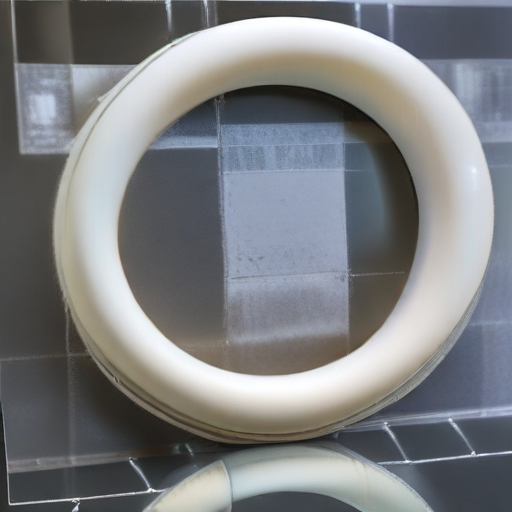
How to use “ptfe o-ring”
A PTFE O-ring, made from Polytetrafluoroethylene, is widely used for its excellent chemical resistance, high temperature tolerance, and low friction properties. Here’s a concise guide on how to use a PTFE O-ring:
1. Selection:
– Size: Ensure the O-ring matches the dimensions of the groove where it will be seated.
– Application: Confirm that PTFE is compatible with the materials and temperatures involved in your specific application.
2. Preparation:
– Clean: Ensure that the sealing surfaces and the O-ring groove are clean and free from debris.
– Inspect: Check the PTFE O-ring for any signs of damage or imperfections.
3. Installation:
– Lubricate: Apply a suitable lubricant if necessary; ensure it is compatible with PTFE material and the application.
– Placement: Carefully place the O-ring into the groove, avoiding twisting or stretching excessively.
4. Assembly:
– Align: Ensure parts to be sealed are aligned correctly to avoid damaging the O-ring.
– Compression: Assemble the parts, making sure that the O-ring is evenly compressed within its groove. Avoid over-tightening which can damage the O-ring.
5. Testing:
– After assembly, perform a pressure or leak test if necessary to verify the integrity of the seal created by the O-ring.
6. Maintenance:
– Regularly inspect the O-ring during maintenance cycles to detect wear or damage.
– Replace the PTFE O-ring if any signs of degradation are observed.
By following these steps, you can effectively utilize a PTFE O-ring in your applications, ensuring reliable performance and extended service life.
“ptfe o-ring” Comparative Analysis
A PTFE (Polytetrafluoroethylene) O-ring is a type of sealing ring known for its exceptional chemical resistance and thermal stability. Here’s a comparative analysis of PTFE O-rings against other common O-ring materials such as Nitrile Rubber (NBR), Viton (FKM), and Silicone Rubber (VMQ).
Chemical Resistance:
PTFE O-rings are virtually inert to most chemicals, making them ideal for use in highly corrosive environments. In contrast, NBR O-rings are resistant to oils and fuels but can degrade in the presence of ozone, sunlight, or weather elements. Viton O-rings offer good chemical resistance, particularly against oils and fuels, but are less resistant to ketones and amines. Silicone O-rings have moderate chemical resistance but excel in environments with weak acids and alkalis.
Temperature Resistance:
PTFE O-rings operate across a wide temperature range, typically from -200°C to +260°C. This makes them suitable for both cryogenic and high-temperature applications. NBR O-rings have a narrower temperature range, usually between -40°C to +120°C. Viton O-rings perform well in high temperatures up to +200°C but may become brittle at extremely low temperatures. Silicone O-rings are effective from -60°C to +230°C, making them suitable for high-heat applications but not for scenarios requiring robust mechanical strength.
Mechanical Properties:
PTFE O-rings are relatively hard and exhibit low elasticity, which can be a drawback in dynamic applications requiring flexibility or resilience. NBR O-rings are known for their good mechanical strength and flexibility, making them suitable for dynamic sealing applications. Viton O-rings provide good mechanical and compression set properties, ideal for static and dynamic applications in harsh environments. Silicone O-rings, while highly flexible, have lower tensile strength and abrasion resistance.
Application Areas:
PTFE O-rings are predominantly used in chemical processing, automotive, and aerospace industries where extreme conditions are prevalent. NBR O-rings are commonly used in automotive fuel systems and hydraulic applications. Viton O-rings find usage in aerospace, automotive, and industrial applications where chemical and thermal resistance is crucial. Silicone O-rings are prevalent in medical devices, food processing, and high-temperature industrial applications.
In summary, PTFE O-rings are unparalleled in chemical and thermal endurance but may fall short in dynamic sealing applications compared to their more elastic counterparts like NBR, Viton, and Silicone O-rings.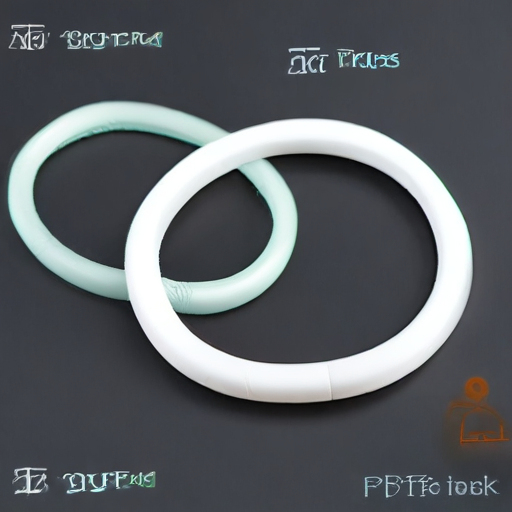
“ptfe o-ring” Warranty and Support
When purchasing a PTFE O-ring, it is crucial to understand the warranty and support policies to ensure your investment is protected. Most reputable suppliers offer a limited warranty, typically ranging from one to five years, against defects in material and workmanship. This warranty usually covers replacement or repair of the O-ring, provided that it has been used in accordance with the manufacturer’s guidelines. It’s essential to register your product, if required, soon after purchase to activate the warranty.
Customer support is another critical aspect. Leading suppliers provide robust customer service, including technical support to help with installation, troubleshooting, and answering any questions about the product’s application. They often offer multiple channels for support, such as phone, email, and live chat, ensuring you can get assistance promptly.
Additionally, many suppliers have comprehensive online resources, including FAQs, manuals, and usage tips, to help you maximize the lifespan and performance of your PTFE O-ring. Some also offer maintenance and inspection services as part of their support package, which can be especially valuable in industrial applications.
Before purchasing, thoroughly review the warranty terms and support options provided by the supplier. Ensure that the product is covered for the specific conditions of your application, such as temperature and chemical exposure limits, as using the O-ring outside these parameters may void the warranty. By understanding these aspects, you can be assured of getting reliable performance and dedicated support throughout the life of your PTFE O-ring.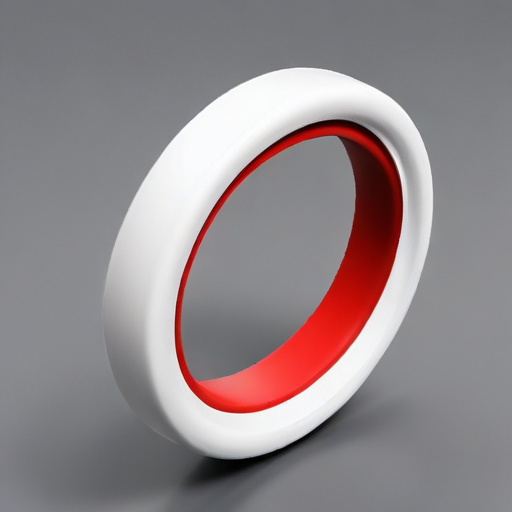
List “ptfe o-ring” FAQ
PTFE O-Ring FAQ
1. What is a PTFE O-Ring?
– PTFE (Polytetrafluoroethylene) O-Rings are sealing rings made from a high-performance polymer known for its excellent chemical resistance, low friction, and wide temperature range capabilities.
2. What are the key properties of PTFE O-Rings?
– Chemical Resistance: Exceptional resistance to a wide array of chemicals, including acids, bases, and solvents.
– Thermal Stability: Can operate in a broad temperature range from -200°C to +260°C ensuring consistent performance in extreme conditions.
– Low Friction: Offers excellent non-stick properties, reducing wear and tear.
– Biocompatibility: Suitable for food and medical applications due to its non-reactive nature.
3. In what industries are PTFE O-Rings commonly used?
– Chemical Processing: For sealing applications in reactors, valves, and pumps where aggressive chemicals are involved.
– Food and Beverage: Due to its non-toxic and non-reactive properties.
– Pharmaceutical: Ideal for sealing components in sterile environments.
– Aerospace and Automotive: Suitable for high-temperature and high-pressure conditions.
4. Can PTFE O-Rings be used with dynamic applications?
– While PTFE O-Rings perform excellently in static applications, they can be less ideal for dynamic uses due to their rigidity and potential for cold flow. Special designs or hybrid materials are recommended for such cases.
5. Are there any limitations to using PTFE O-Rings?
– Although PTFE O-Rings offer many benefits, they are less flexible than rubber O-Rings, can be more expensive, and may require careful handling to avoid damage due to their relatively low elasticity.
6. How do PTFE O-Rings compare to other materials?
– Compared to rubber O-Rings, PTFE provides superior chemical resistance and a broader temperature range but lacks the elasticity and compressive strength of rubber. Ethylene Propylene Diene Monomer (EPDM) and Viton are alternatives with different specific advantages depending on the application needs.
7. What should be considered when selecting a PTFE O-Ring?
– Factors include the chemical compatibility with the media, the temperature range of the application, the required seal performance (static or dynamic), and the mechanical stresses the O-Ring will endure.
By understanding these FAQs, you can better determine if PTFE O-Rings are the right choice for your sealing needs.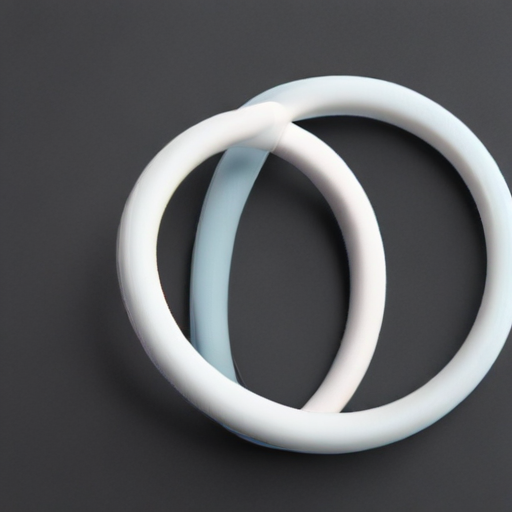
Top 10 FAQ with answer about ptfe o-ring for Buyer Sourcing from China
Top 10 FAQs About Sourcing PTFE O-Rings from China
1. What is PTFE and why is it used for O-rings?
– PTFE (Polytetrafluoroethylene) is a synthetic fluoropolymer known for its high resistance to chemicals, temperature extremes, and low friction. It is ideal for O-rings in aggressive environments.
2. How do I verify the quality of PTFE O-rings from Chinese suppliers?
– Look for ISO 9001 certification, request material datasheets, review third-party testing reports, and consider sample orders to validate quality.
3. What is the typical lead time for PTFE O-ring orders?
– Standard lead times range from 2 to 6 weeks, depending on order volume and customization requirements. Shipping may add additional time.
4. Can Chinese suppliers customize PTFE O-rings based on my specifications?
– Yes, many Chinese suppliers offer customization services, including varying sizes, shapes, and special compound formulations to meet specific needs.
5. What are the common applications for PTFE O-rings?
– PTFE O-rings are used in automotive, aerospace, chemical processing, food & beverage, pharmaceutical, and electronics industries due to their versatile properties.
6. What are the typical payment terms when ordering from China?
– Payment terms often include a 30% deposit upfront with the balance paid before shipment. Other terms like letter of credit (L/C) or trade assurance via platforms like Alibaba are also common.
7. Are there any minimum order quantity (MOQ) requirements?
– MOQs vary by supplier but are typically between 1,000 to 10,000 units. Some suppliers might be flexible for initial small orders.
8. What factors affect the cost of PTFE O-rings from China?
– Costs are influenced by material grade, size and complexity of the O-rings, order volume, customization, and international shipping fees.
9. How do I handle logistics and shipping from China?
– Use experienced freight forwarders or logistics companies, and choose between air freight for speed or sea freight for cost efficiency. Incoterms like FOB, CIF, or DDP will determine costs and responsibilities.
10. What after-sales services do Chinese PTFE O-ring suppliers offer?
– After-sales services can include quality guarantees, replacement of defective products, technical support, and ongoing communication for future orders.
By addressing these common questions, buyers can better navigate the process of sourcing high-quality PTFE O-rings from China efficiently and effectively.



